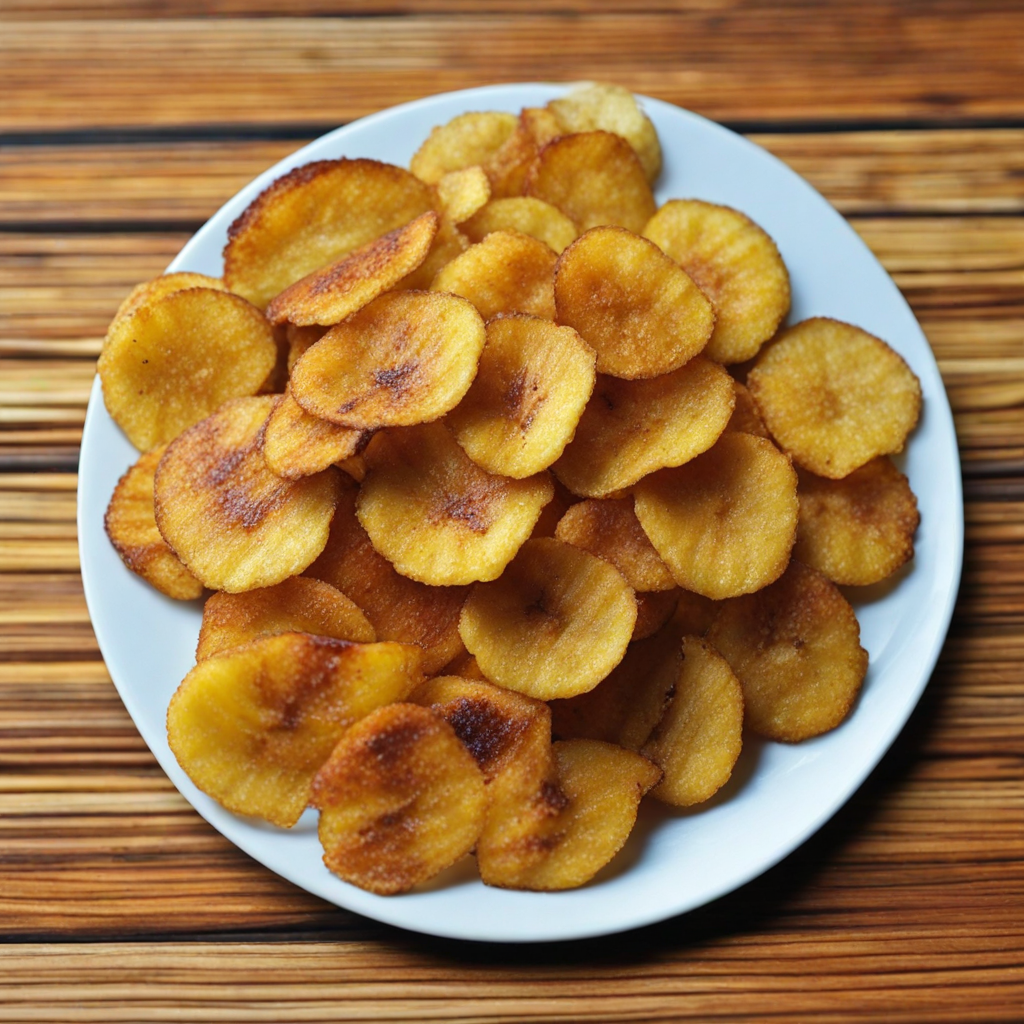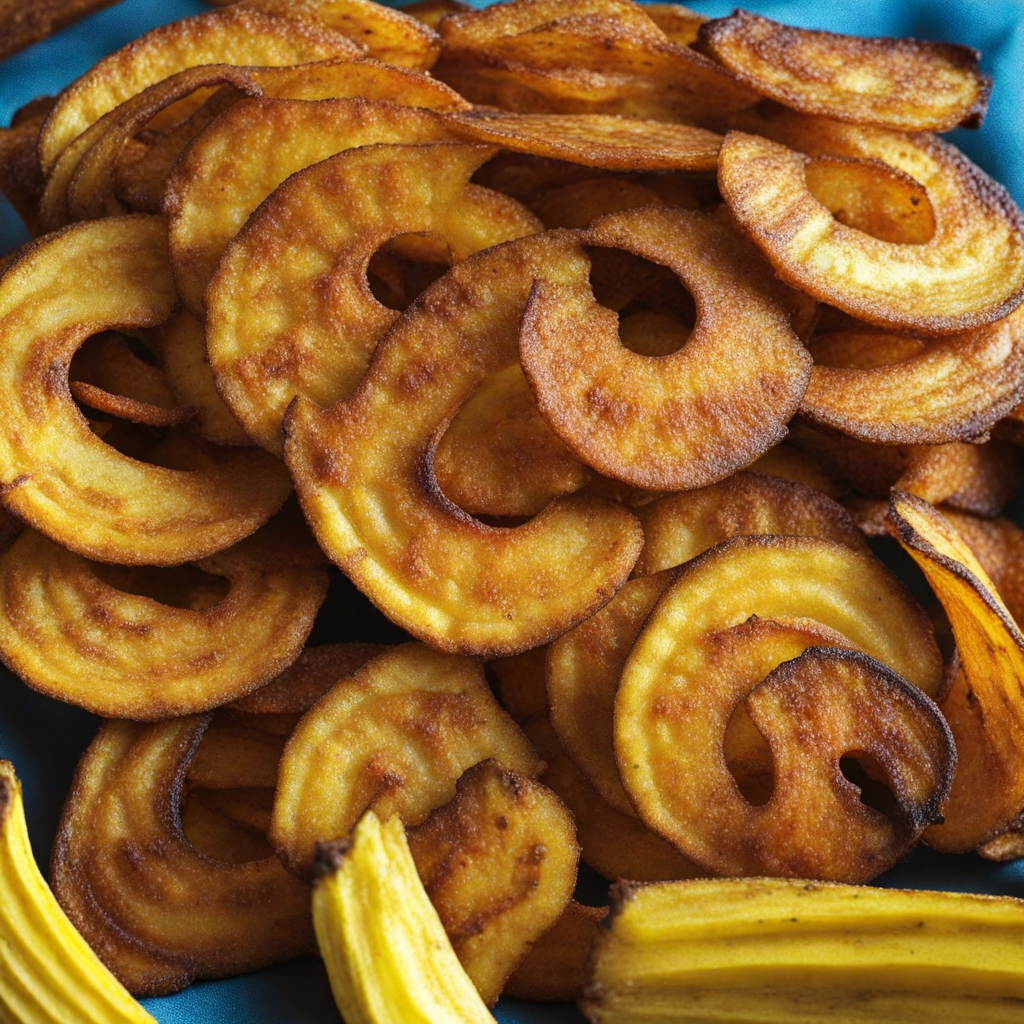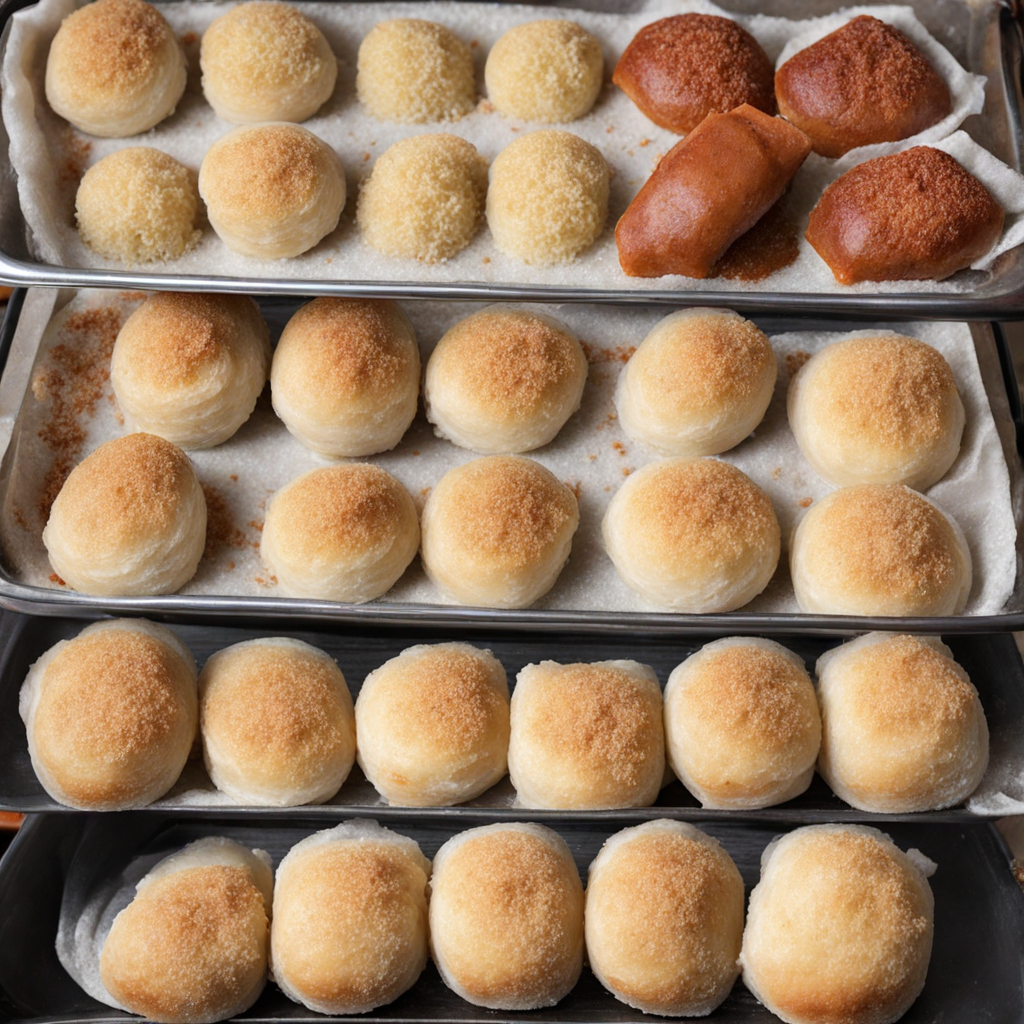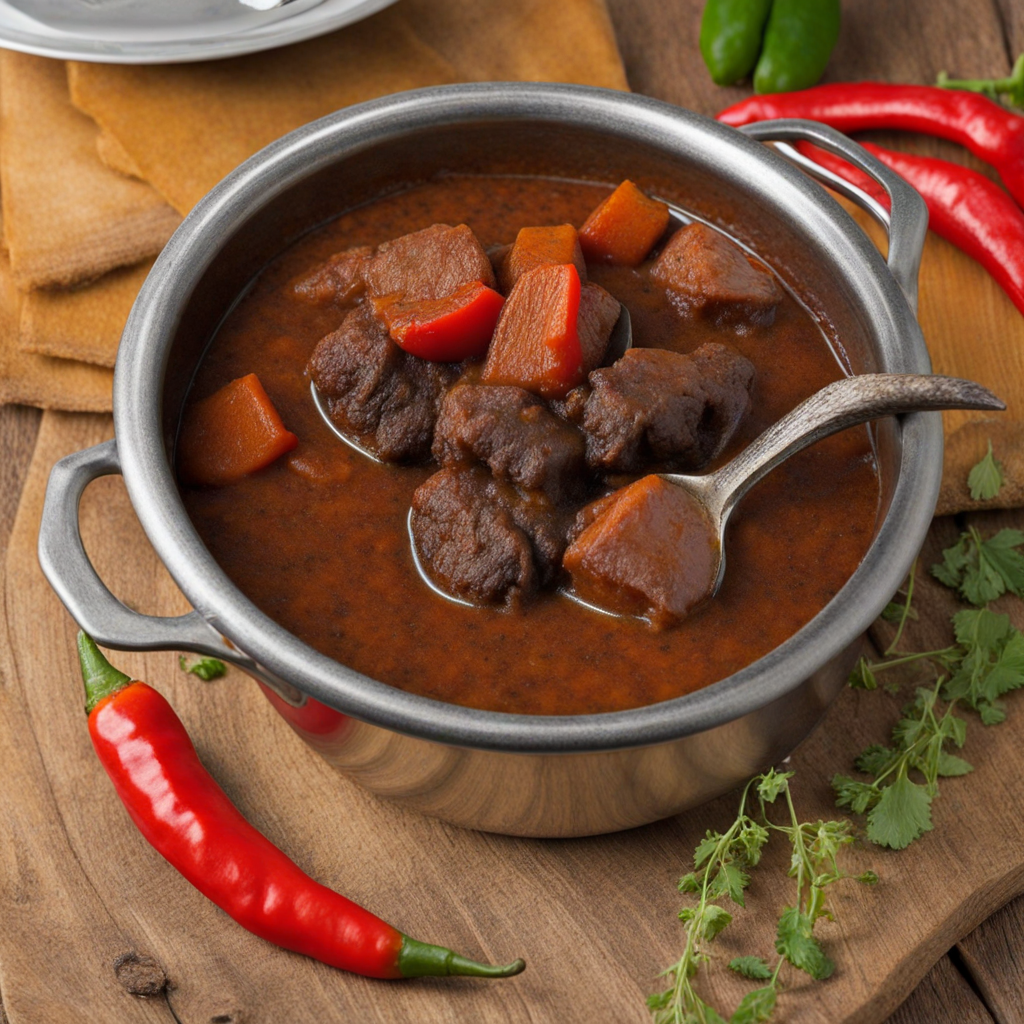Plantain Chips
Plantain chips are a delightful snack originating from the lush landscapes of Guyana, where the plantain, a staple fruit, thrives. These chips are made from green plantains that are sliced thinly and then fried to a crisp perfection. The result is a crunchy, slightly salty treat that delivers a satisfying crunch with every bite. The natural sweetness of the plantain shines through, balancing the savory notes and providing a unique flavor profile that sets them apart from traditional potato chips. In Guyana, plantain chips are often seasoned with a variety of spices that enhance their taste. Common seasonings include garlic powder, paprika, and sometimes a hint of cayenne for those who enjoy a little heat. This adds an extra layer of complexity to the chips, making them an irresistible snack for both casual munching and entertaining. The versatility of plantain chips allows them to be enjoyed on their own, paired with dips like guacamole or salsa, or even as a crunchy topping for salads and soups. What makes plantain chips truly special is their cultural significance in Guyana. They are not just a snack but a beloved part of the country’s culinary heritage, often enjoyed during gatherings and celebrations. Whether you're savoring them at a festive occasion or simply indulging in a quiet moment, plantain chips offer a taste of Guyanese tradition, inviting you to explore the vibrant flavors of this Caribbean nation. Their crispy texture and unique flavor make them a must-try for anyone looking to embark on a new culinary adventure.
How It Became This Dish
The History of Plantain Chips in Guyana: A Flavorful Journey Plantain chips, a beloved snack in Guyana, carry a rich history intertwined with the country's diverse cultural heritage. These crispy delights are not merely a food item; they represent the confluence of indigenous practices, African influences, and colonial impacts, making them a symbol of Guyana's multifaceted identity. #### Origins: The Roots of Plantains The story of plantain chips begins with the plantain itself, a starchy fruit closely related to the banana. Native to Southeast Asia, plantains made their way to the Caribbean and South America through trade routes and colonization. Historical records suggest that plantains were cultivated in West Africa long before being introduced to the Americas. The plantain, particularly in its unripe form, became a staple in the diets of various communities, serving as a versatile ingredient that could be boiled, fried, or baked. In Guyana, the indigenous peoples first utilized the plantain, embracing its nutritional value and culinary versatility. They prepared it in numerous ways, laying the groundwork for the diverse culinary traditions that would follow. The arrival of African slaves in the 17th and 18th centuries further enriched the use of plantains in Guyanese cuisine. Enslaved Africans brought their culinary techniques and preferences, incorporating plantains into their meals as a means of sustenance and comfort. #### Cultural Significance: A Culinary Symbol Plantain chips became particularly significant in Guyanese culture as they evolved into a popular snack food. Their preparation often involves slicing green, unripe plantains thinly and frying them until crispy. The result is a light, crunchy treat that can be enjoyed on its own or paired with various dips and condiments, such as hot pepper sauce or a tangy chutney. In many households, the making of plantain chips is a communal activity, often enjoyed during family gatherings, celebrations, or as part of everyday life. This shared experience reflects the importance of food in fostering community bonds, serving as a reminder of heritage and togetherness. Moreover, plantain chips have become an emblem of Guyanese hospitality. When welcoming guests, offering homemade snacks like plantain chips signifies warmth and generosity. This practice connects the past with the present, as families continue to uphold traditions while adapting to modern tastes. #### Development Over Time: From Tradition to Global Snack As globalization took hold in the late 20th century, Guyanese cuisine, including plantain chips, began to gain recognition beyond its borders. The diaspora community, particularly in North America and Europe, carried their culinary traditions with them, introducing plantain chips to a wider audience. This global exposure sparked interest in Caribbean flavors and snacks, leading to the establishment of brands that produce plantain chips on a larger scale. The commercialization of plantain chips marked a significant shift in their production and consumption. While traditional homemade versions remained popular, packaged plantain chips became readily available in supermarkets and health food stores. Brands began to offer various flavors and styles, from lightly salted to spicy, catering to diverse palates and dietary preferences. This evolution not only contributed to the snack's popularity but also highlighted its adaptability in a fast-paced, modern world. #### The Health Aspect: A Nutritional Perspective As the world became increasingly health-conscious, plantain chips found their place in the realm of nutritious snacking. Unlike traditional potato chips, plantain chips are often perceived as a healthier alternative due to their high fiber content and the presence of essential vitamins and minerals. They are naturally gluten-free and can be made with minimal ingredients, appealing to those looking for wholesome snack options. In Guyana, the local production of plantain chips often emphasizes natural ingredients, with many families opting to make them from scratch using minimal salt and oil. This aligns with a broader trend toward clean eating and sustainable food practices. As awareness of the health benefits of plantains grows, so too does the appreciation for their role in both traditional and contemporary diets. #### The Future: Plantain Chips in a Global Context Looking ahead, the future of plantain chips in Guyana and beyond is promising. As more consumers seek out unique, flavorful snacks, the demand for plantain chips is likely to increase. This presents an opportunity for local producers to innovate while staying true to traditional methods. The rise of artisanal brands and small-scale producers can help preserve the cultural significance of plantains while catering to modern tastes. Moreover, the fusion of culinary traditions offers exciting possibilities. Chefs and home cooks alike are experimenting with plantain chips, incorporating them into innovative dishes or pairing them with international flavors. For instance, plantain chips can be used as a crunchy topping for salads, incorporated into gourmet appetizers, or even served alongside international cuisines, showcasing their versatility. Furthermore, the ongoing globalization of food culture means that plantain chips may continue to find new markets, transcending their regional origins. As they become a global snack, there is a potential for greater appreciation of Guyanese culture and culinary heritage, allowing more people to experience the joy of this simple yet delicious treat. #### Conclusion: A Snack that Tells a Story In conclusion, plantain chips in Guyana are more than just a crispy snack; they embody a rich tapestry of history, culture, and community. From their indigenous roots and African influences to their evolution in a globalized world, plantain chips have become a symbol of resilience and adaptability. They tell a story of migration, tradition, and innovation, connecting generations and cultures through the shared experience of food. As Guyana continues to navigate the complexities of modernity while honoring its past, plantain chips will undoubtedly remain a cherished part of its culinary landscape. Whether enjoyed at a family gathering, sold in a vibrant market, or found on a supermarket shelf, plantain chips serve as a delicious reminder of the land's rich history and the diverse communities that call it home.
You may like
Discover local flavors from Guyana







